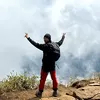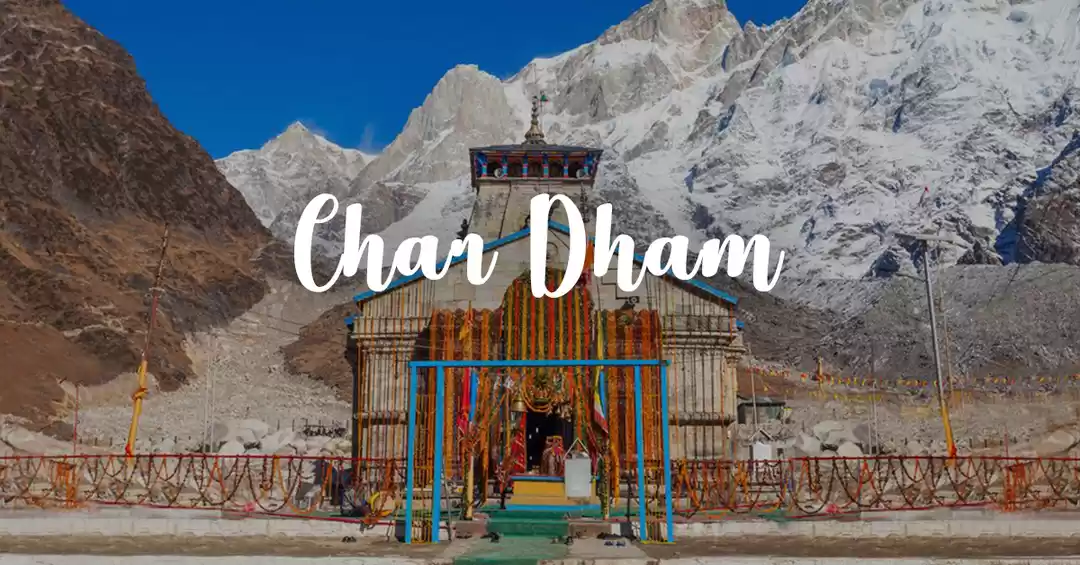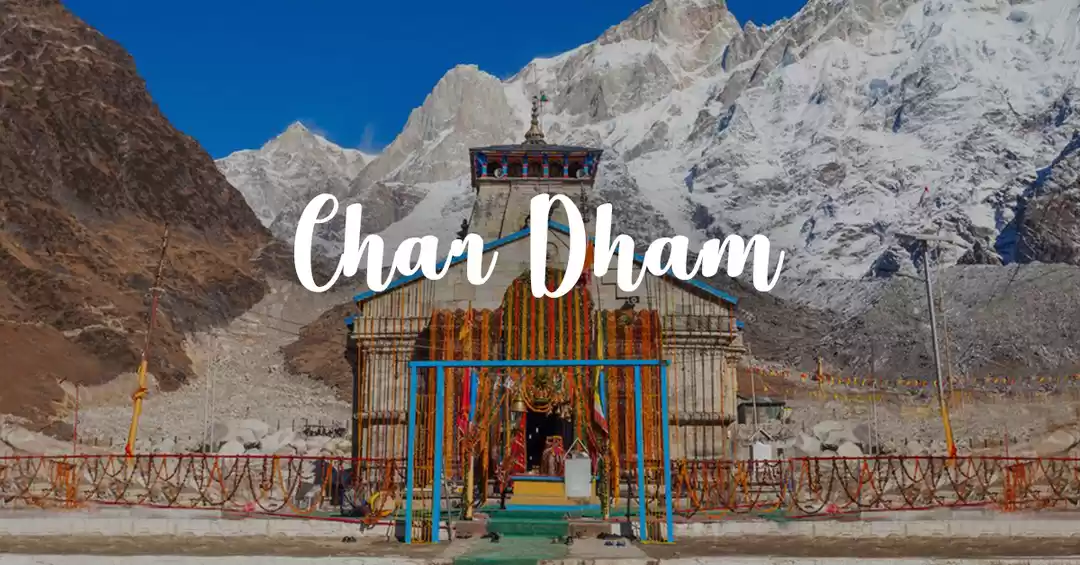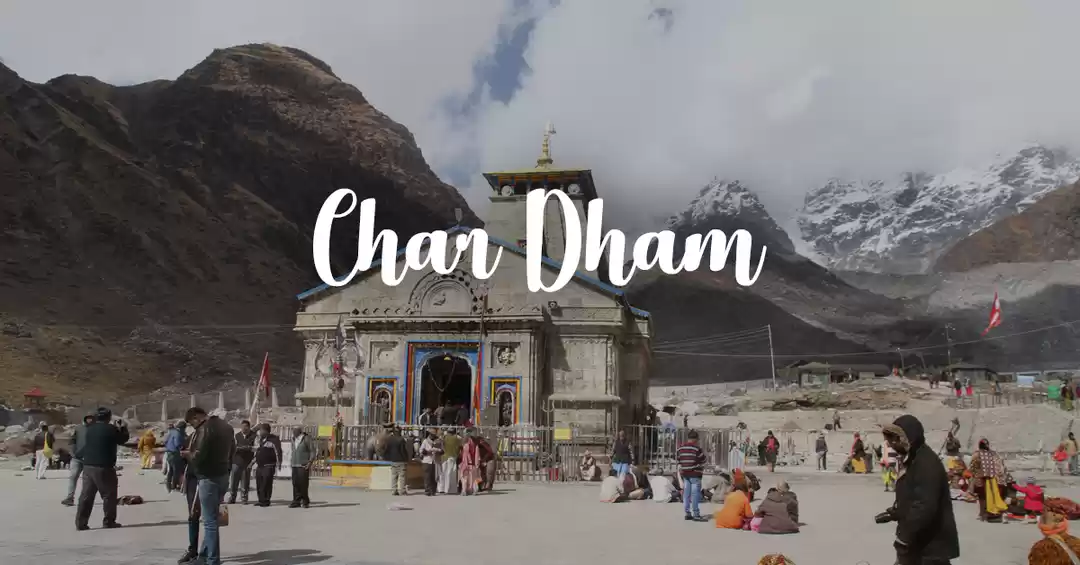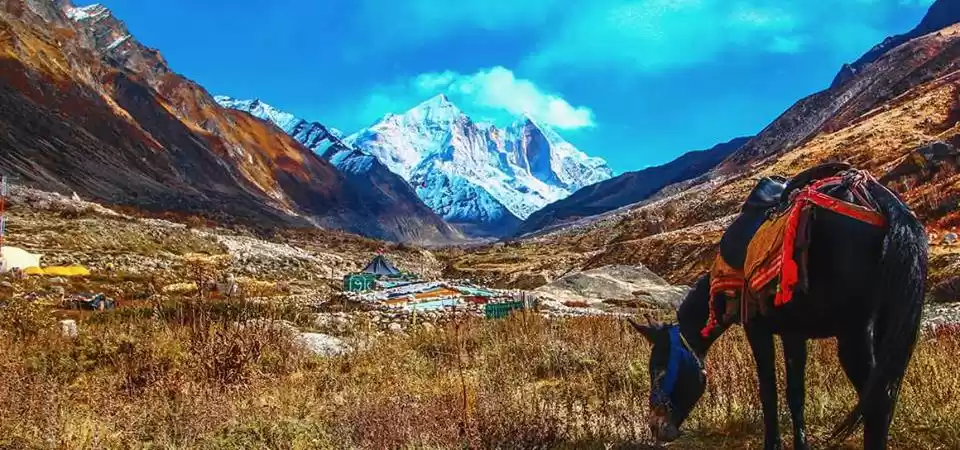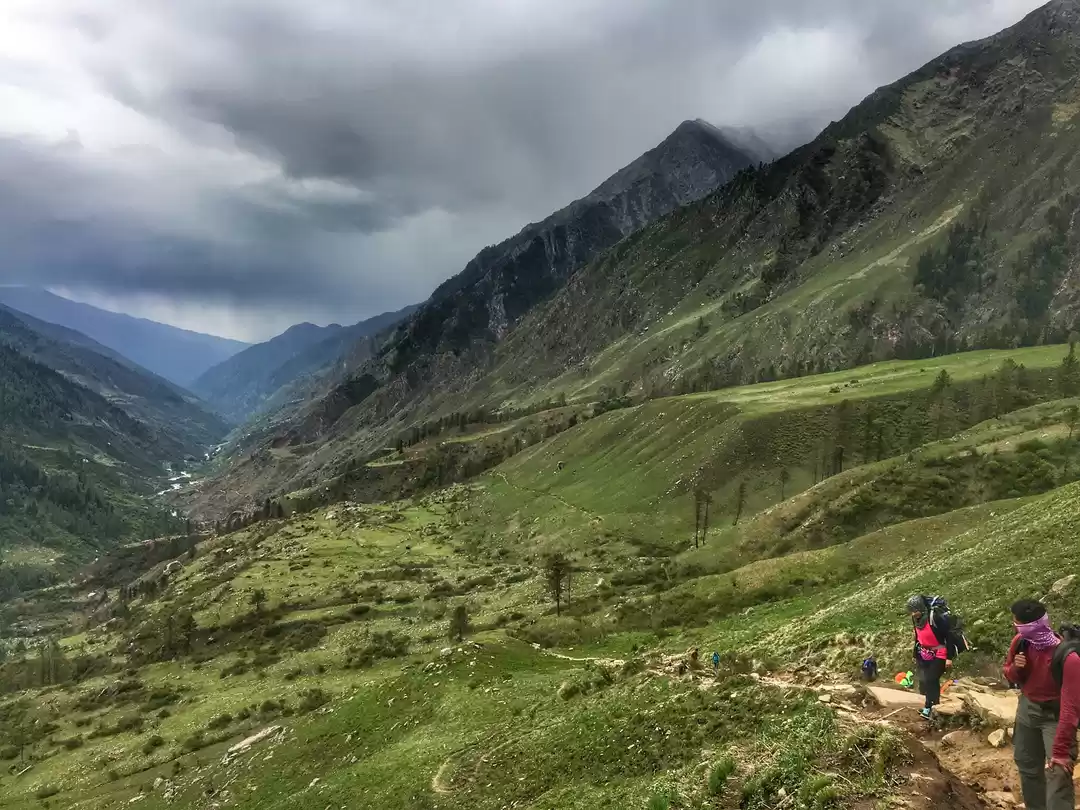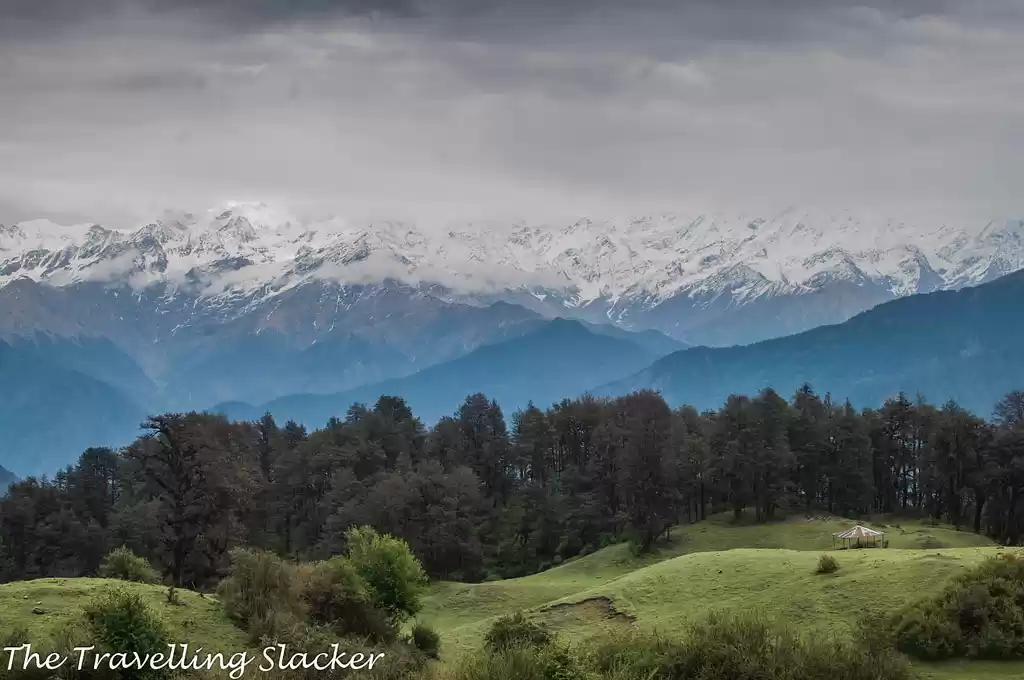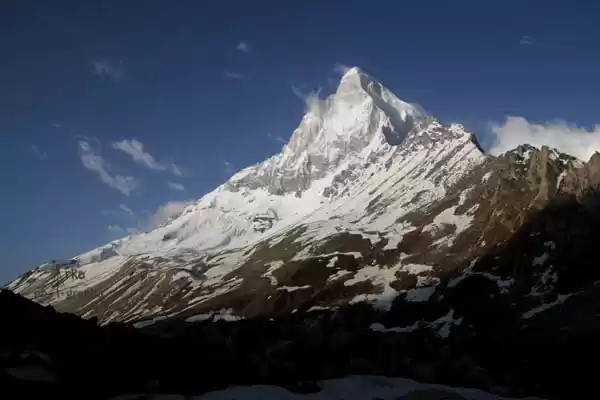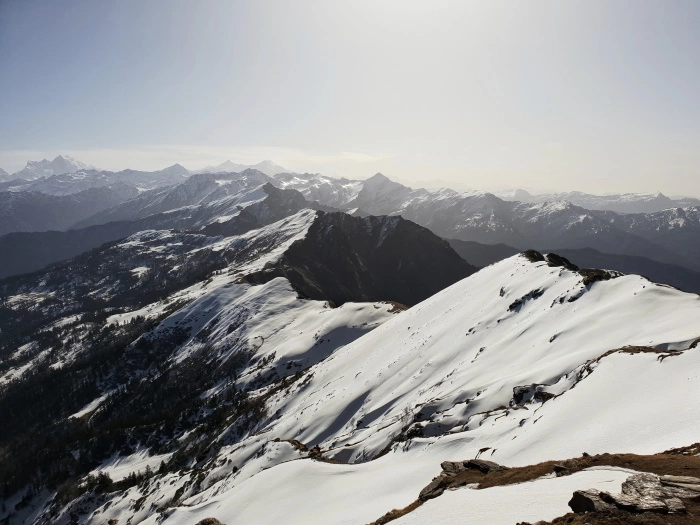Mountains have their own charm and every mountain lover you come across has their own theory of why they wish to traverse thousands and thousands of miles in harsh and (sometimes) unforeseen weather conditions and hardships to reach the top of the world. I mean, what do they gain by forcing their bodies to step out of the comfort zone for days, weeks, or in the case of expeditions, months? I don't think you'd be able to get a satisfactory answer that will hopefully close the ongoing loop on this topic.
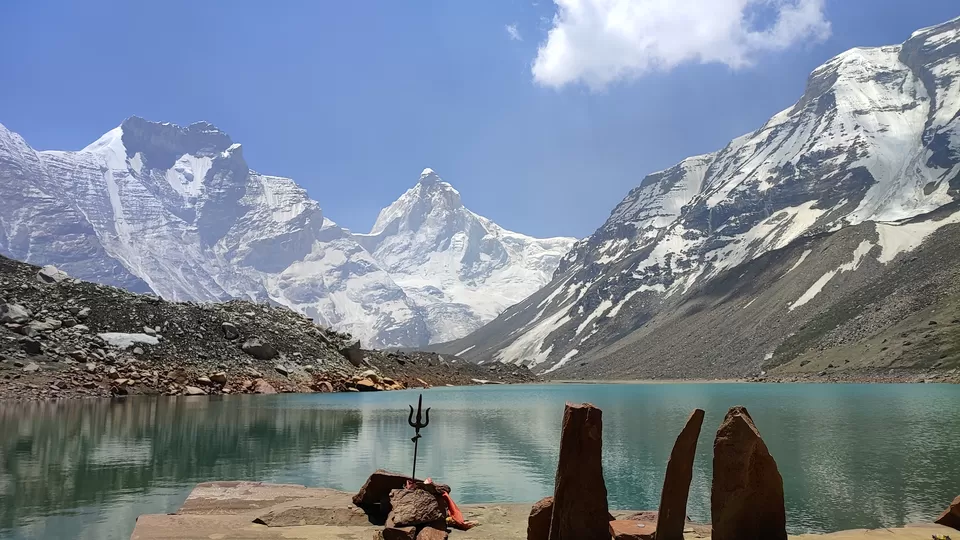
Rather than getting too philosophical and diverging from my script, let me dive into the details of my fascinating journey to an emerald and pristine lake located at 15,600 feet above sea-level in the Garhwal region of the Himalayas in Uttarakhand.
For the general public and for those who are hearing this for this first time, Kedartal, popularly known as Shiva's lake, is a glacial lake fed by the snowfall over the towering peaks of ThalaySagar, Meru, Bhrigupanth and neighboring mountains, which also happen to the source of Kedar Ganga. This, in Hindu mythology, is regarded to be Lord Shiva's contribution to the river Bhagirathi in the lower Himalayas.
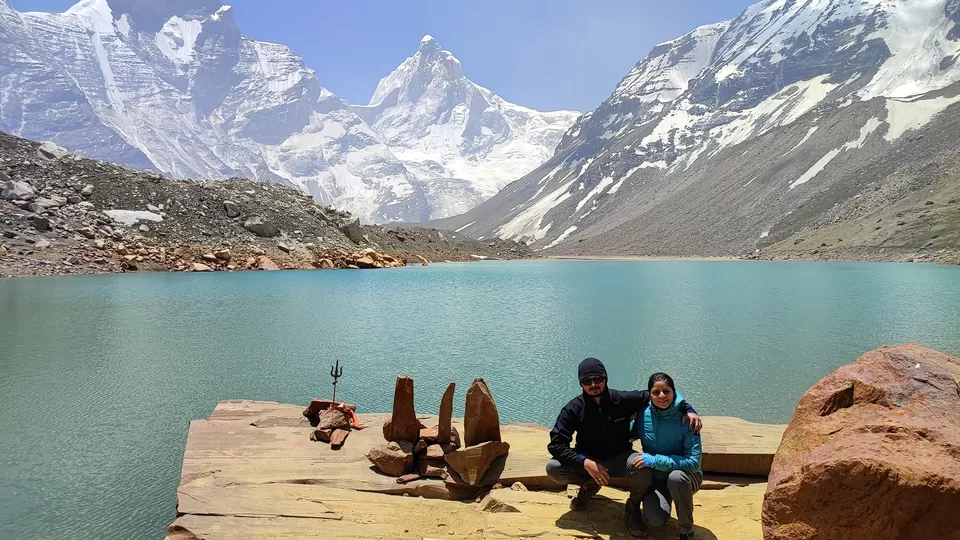
Promoted as the "hidden gem" of Uttarakhand, the route to this magical lake is quite adventurous. Originating from (what is believed) to be the source of the river Ganges, the historic town of Gangotri is the base of this high-altitude climb.
Given whatever I had read off the internet and coupled with the fact that I'd rather trek to the lesser known and/or crowded mountain destinations, Kedartal was an obvious choice for the summer of 2022.
Chapter 1: All routes lead to Gangotri
Getting to Himachal or Uttarakhand is always a task for us Mumbaikars. We arrived in Dehradun a day prior to the actual trip. We checked into Zostel for the night and aligned on the meeting point with the group via WhatsApp.
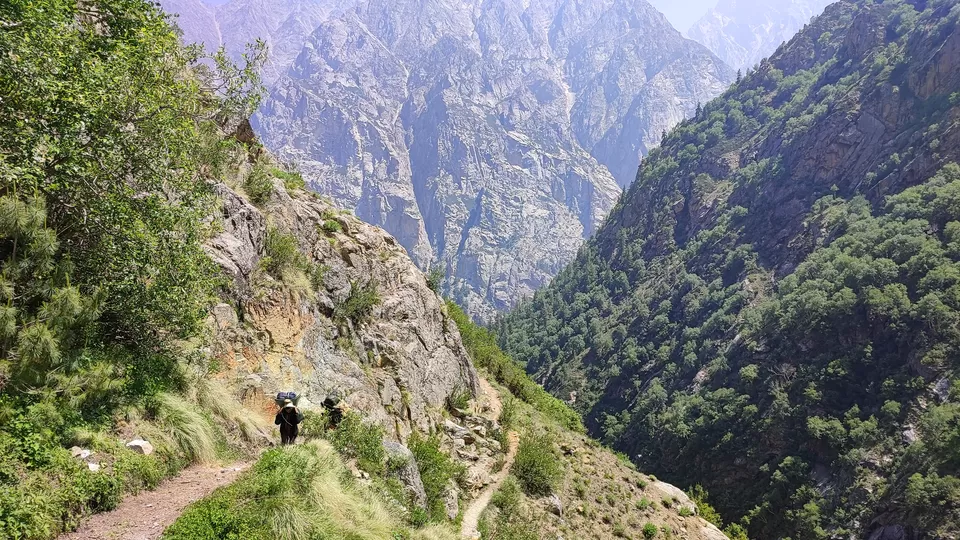
After meeting the group at the selected location, we hopped into our designated Tempo Traveler and left for a long drive to Gangotri.
Gangotri is one of the "chaar" dhams of Hindu pilgrimage in the country and lies at an altitude of 10,000 ft. Given the winding roads and interim traffic at some points, it does take a few hours to reach this spiritual destination.
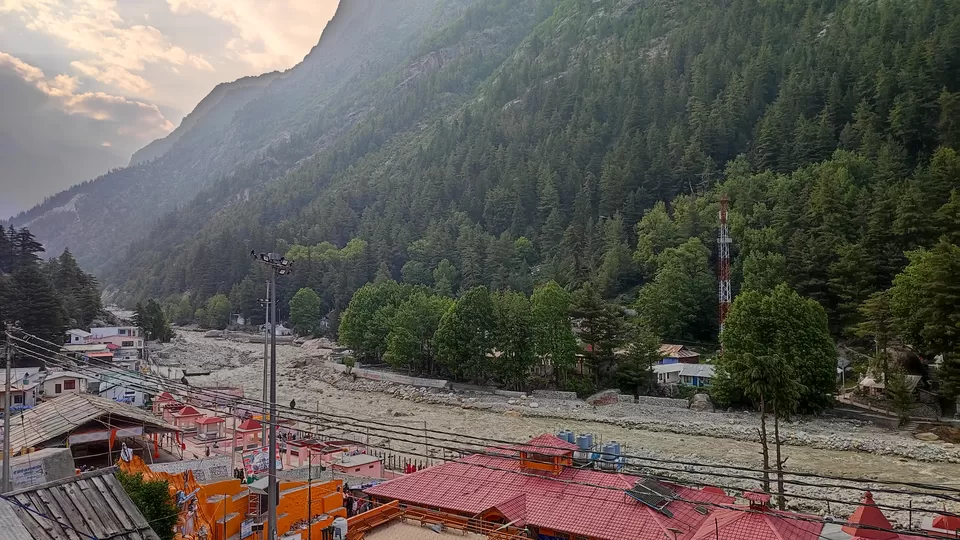
After a quick meet & greet with our fellow travelers and pit stops for lunch and tea, we arrived in Gangotri. Also, of mention was the brief halt near one of the hot springs en route since we were anticipating several vehicles returning from the Gangotri Yatra. This gave us a sense of the number of people who may be already be visiting the temple at this time of the year.
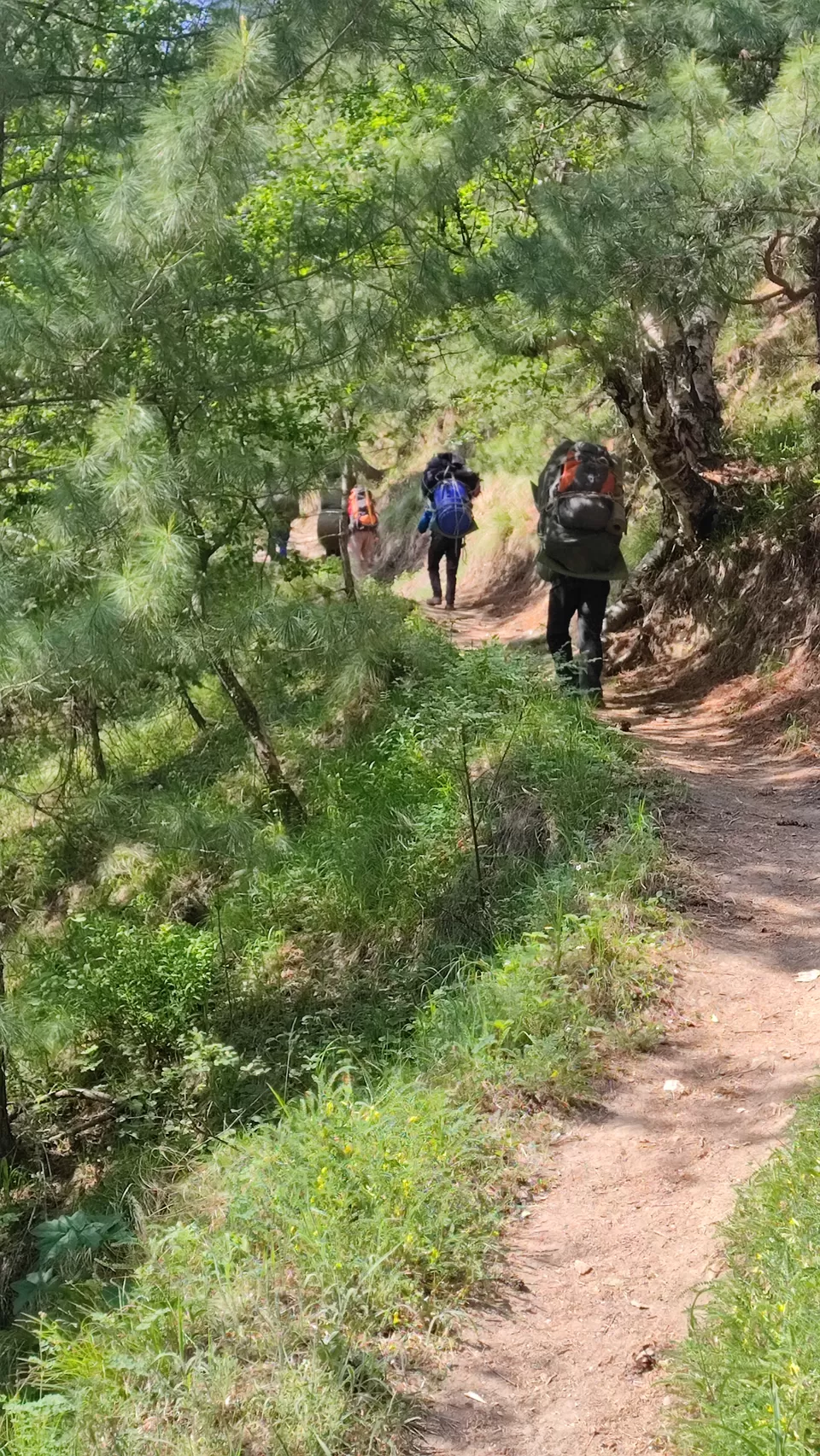
On arriving at Gangotri moments after dusk set in, we were greeted by our trek guide, Hardik. Since the temple had shut for the day, the crowd has dispersed. We made our way through the main market decked with lights and hoarding several shops. Folks selling anything and everything, including spiritual items, toys food, groceries, and accessories met our eyes. After a brief walk, we arrived at our guest house and were instructed to finish our dinner first lest the stall shuts down.
We freshened up quickly and walked back to the market. Since it had already been a long day, we settled for something simple and found ourselves a hotel providing roti, sabji and vegetable curry.
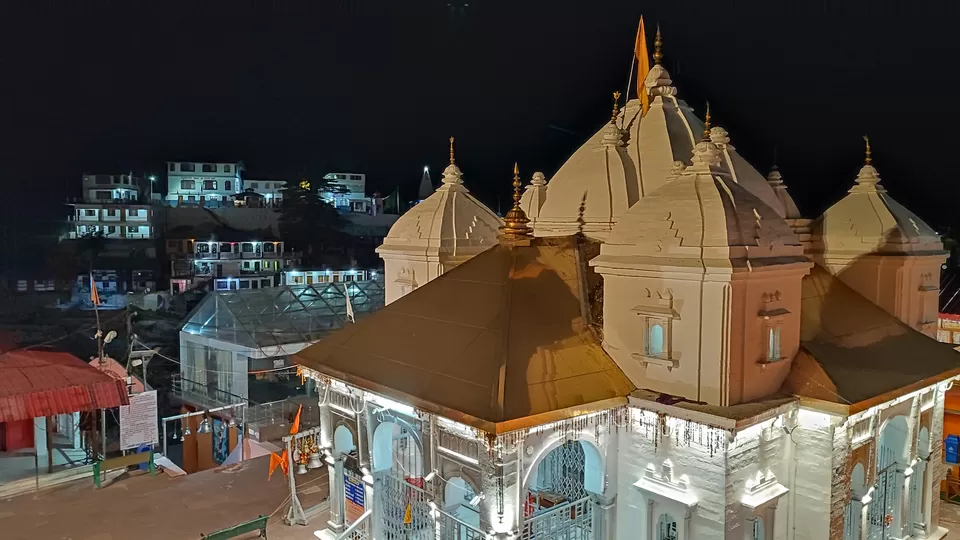
As we awaited the food to be served, random conversations were initiated among the group. We hailed from different regions of the country, which typically is the case on such group trips. We were each other companions and support system for the next few days; so, this preliminary bonding treat was much needed.
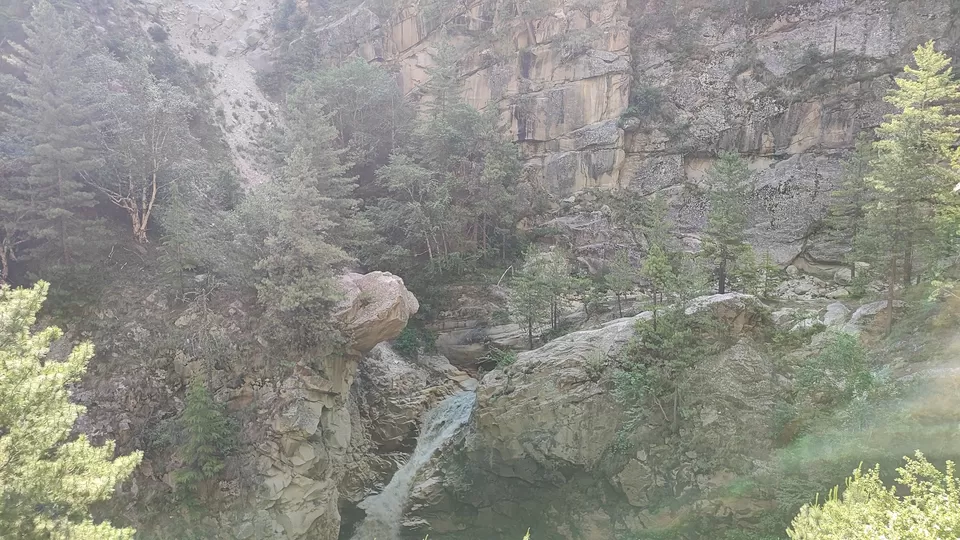
The evening was normal as we filled our stomachs while hearing the Ganga flowing in the background. The sound of water hitting the boulders as it made its way turbulently down the Himalayan range was refreshing.
Our guest house was at a slight elevation giving a clear view of the temple below and surroundings. We resigned for the night soon after.
Chapter 2: Rest well and prepare for the adventure! A day off in Gangotri
The gentle sound of the stream coupled with temple bells ringing early morning (around 5 AM) was a wake up call for me at least. I slept quite well, which wasn't surprising! So, having an early start to the day wasn't concerning. I stepped out of my room to witness a huge queue for "darshan" outside the temple.
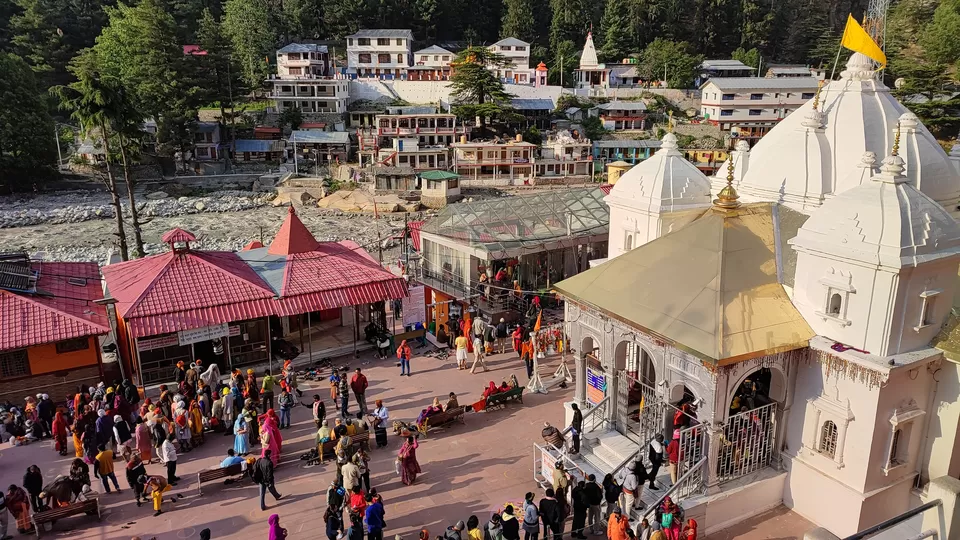
Announcements were underway and I noticed several souls taking a dip in the ice-cold stream before making their way to the queue. That's no joke for those who have even remotely experienced the temperature of such waters and it certainly takes a lot of mental strength and grit to demonstrate this enthusiasm.
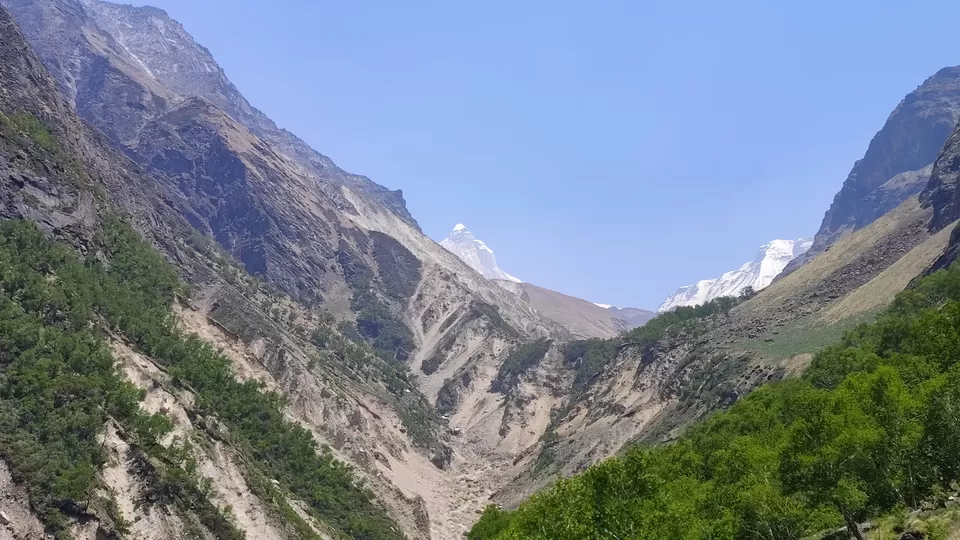
The sun was out by now, and from what it seemed, the day was going to be beautiful. After getting ready, we left for breakfast and treated ourselves to some hot parathas, Maggie, and tea. Hardik came around with a local and mentioned that we'd be leaving to explore the surroundings in some time and get acclimatized in the process.
As we made our way to the Gauri and Surya kunds (a reservoir where rainwater gets collected), I noticed the a surge in the devotees heading towards the temple. We had already decided to pay our homage in the second half. The walk towards the kund and adjoining Pandava caves wasn't taxing by any means. The idea, as aforementioned, was to remain outdoors and make peace with the climatic conditions.

We also visited the Tapovan Hiranyagarbha Art Gallery that houses over a thousand photographs of Himalayan caves, valleys, its culture and folk life. The creation of this art gallery is credited to the famous photographer and ascetic Swami Sundaranand and features the changes in the Gangotri National Park in the last 72 years.
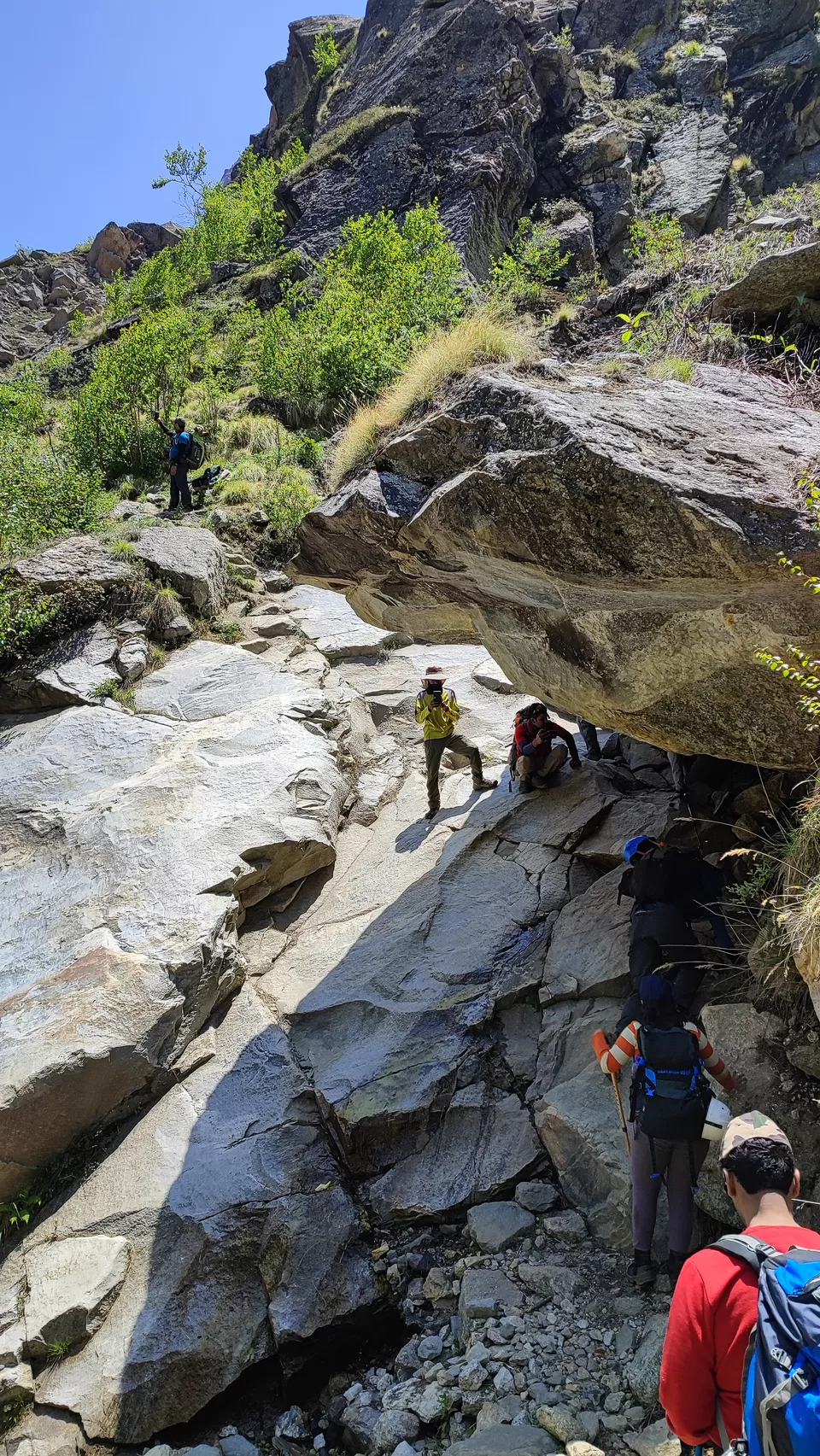
While heading towards the Pandava caves, my earlier doubts around knowing our trek leader from somewhere got confirmed when Hardik himself disclosed that he used to be associated with Trek the Himalayas (TTH), another popular trek organizer, and had recently moved to Bikat Adventures. Well! It was good to know we were in safe hands as Hardik brings tremendous mountain expertise and skill to the table. He apparently donned many hats back in the day, including being a DJ, but his love for mountains and expeditions was much higher than pursuing a music or DJ career in the city.
Anyways, the folks introduced themselves to each other, following which the route and plan for the next few days was laid out by Hardik. The usual rules and regulations were communicated effectively to the group and some basic questions were answered. We still had the rest of the day to ourselves.
Before heading back to the main market, we paid a visit to a solo ascetic apparently residing in the Pandava cave since long. On entering the cave, we noticed him sitting with (possibly) his devotee in what I'd describe an inviting yet stern and stable posture. He offered to entertain us for a bit and prepared coffee, which was a tad extra sweet for our palettes. There were moments of awkward silence and pauses as we intermittently heard him comment on the struggles that "saadhu's" typically undergo to attain enlightenment in the lap of Nature and the Ganges. While everyone is entitled to an opinion about spirituality and religion, including a saint's life and perspective, I have to admit I have limited vocabulary in this walk of life and would conveniently steer away from any controversial conversations.
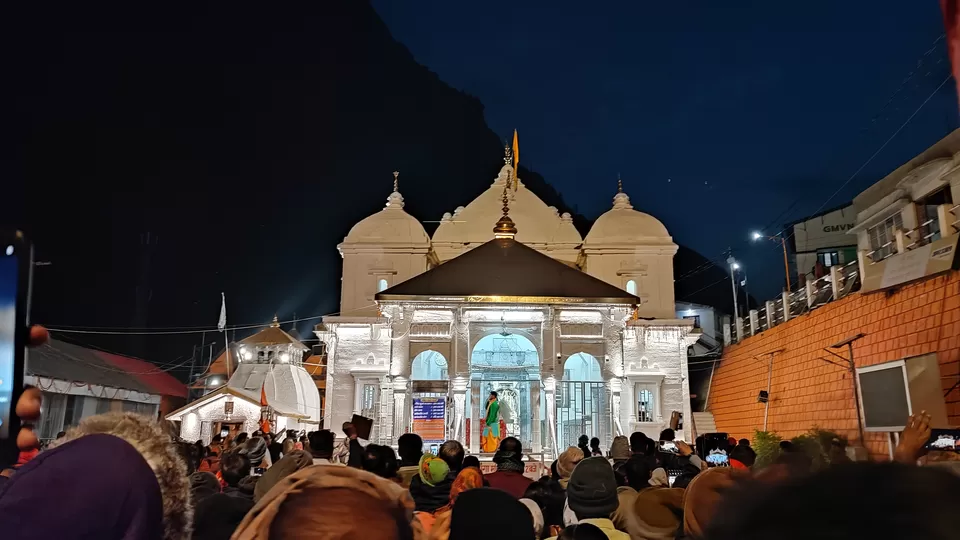
So, after this brief interaction with the man of the cave, we headed back to the main market for lunch. The rest of the evening was spent by the strong currents of the Ganges and dipping our feet in the cold water(for better acclimatization perhaps, Haha!) and witnessing the Ganga Aarti later. We managed to get a good view of the Aarti considering the limited seating space and excessive people, all trying to get a glimpse of the event.
Some light and candid moments with a kid in the mood for playing catch amidst the growing crowd was on display. His parents didn't mind as long as the ball didn't injure anyone. Sourav and I were this kid's associates in the game. It lasted for a meagre 15 minutes before the Aarti commenced.
After the Aarti, we left for dinner since we had an early start on the following day. After a simple and wholesome meal, we returned to our guest house, packed our bags and entered into Dream World.
Chapter 3: Journey to our first campsite at Bhoj Kharak
In my opinion and trekking experience over the past 8 years, I believe one of the most most important rules while trekking is to ensure time adherence and maintain discipline. I was happy to see everyone following it stringently in our group.

Our objective for today was to ascend close to 3,600 ft to our first campsite, Bhoj Kharak. The group members had done their background reading and research about the trail and the mysterious "spider wall" climb was making appearances in almost every conversation. Hardik didn't spill the beans as he wanted us to be the judge of whether it was worth the hype.
Without further ado, we started walking past the Bhairav Ghati bridge across the River Bhagirathi and continued on the well-defined forest trail. The first half of this trek towards the campsite can be reached only via this route. Homes of several villagers and locals are crossed as the trail proceeds. The Kedar Ganga was on the left of our path, and we walked ahead, our eyes feasted on the dense forest of Bhojpatra trees. If history is to be believed, the bark of these trees were believed to be used to write literature. The welcoming shade of these trees and some purple rhododendrons guided us as we gradually went higher.

While the trail was fairly steep, there were several flat patches along the way that balanced our efforts and allowed us to catch our breath. When we reached the first spider-wall, I wasn't too ecstatic, to be honest. It was hardly a climb and didn't require any special skill or technical support. In fact, the terrain that we traversed on the Summit Day was more adventurous, but let me touch on that later.
Coming back to the "hyped" spider-wall, the first one was (by no exaggeration) a cakewalk for all group members. I was looking forward to the second spider-wall of the trail, which was the last climb before our first pit stop at Bhoj Kharak. The second segment of this trail could still be considered eligible for entry into the spider-wall awards category, but don't keep your hopes high!
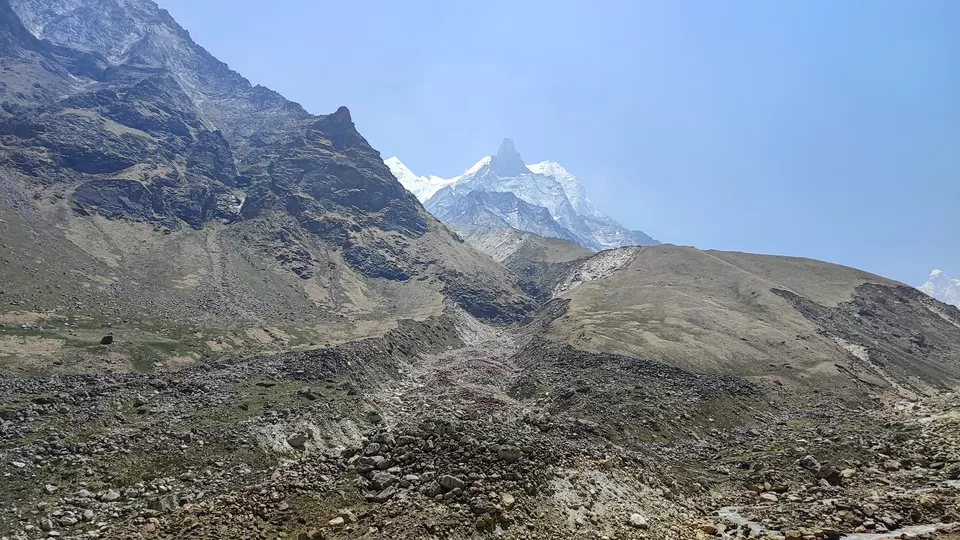
After arriving at our campsite and changing into some warm clothes, we assembled in the common dining tent for tea and evening snacks. I started experiencing mild discomfort. Not that my body was aching or I had gotten injured, but I felt pukish and nauseous. We were camping close to 13,000 ft and this feeling was not something that I had experienced in any of my previous high-altitude adventures.
Although I was actively participating in the interesting and political conversations of the group with the hope that the uneasiness will dissolve, it didn't seem to go away. Moments later, I excused myself and walked outside of the tent. The cool breeze outside felt better, and I finally puked. Not a pleasant sight and I could sense the light-headedness that accompanied the vomiting. No other symptoms thankfully!
Hardik approached Shruti and me and I reassured both of them that I'm fine. It must have taken my body some effort to get used to the altitude change. Being acutely aware of AMS and what it can possibly do to an individual, I was confident that wasn't the case. I told them that I'd simply have plain rice for dinner and avoid taking any other solids or liquids (besides water). As with any treks, dinner was served by 7 PM and I stood outside and ate a bowl of plain rice. I refrained from taking any medication as well and hoped that I'd feel fine after a good night's sleep.
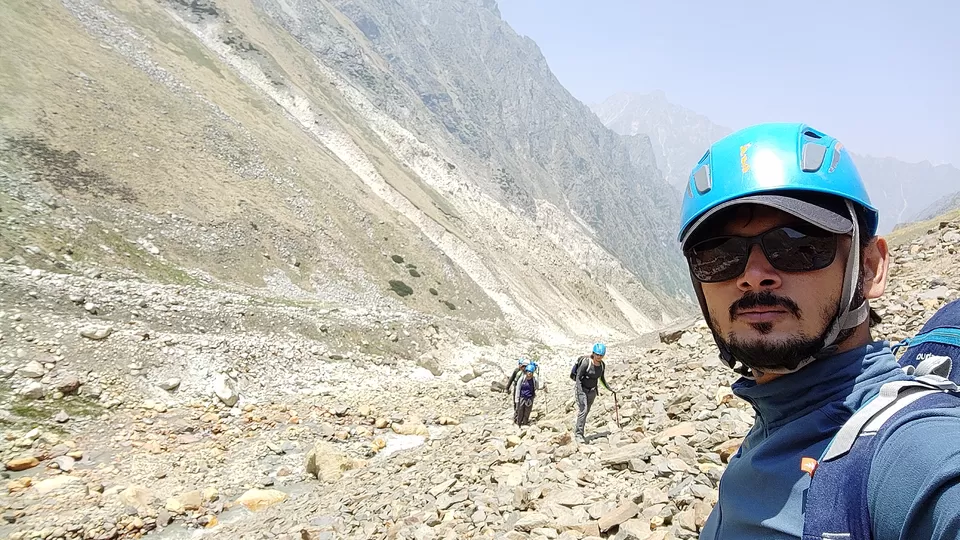
Chapter 4: Upwards and onwards - Bhoj Kharak -> Kedar Kharak
After the brief hiccup on my health the previous evening, I woke up feeling completely rested and pumped up for another day of walking. As expected, it was just my body getting used to the sudden shift in altitude and continuous ascent on the previous day. I was hungry too and ensured I had a proper breakfast before commencing on our journey to Kedar Kharak.
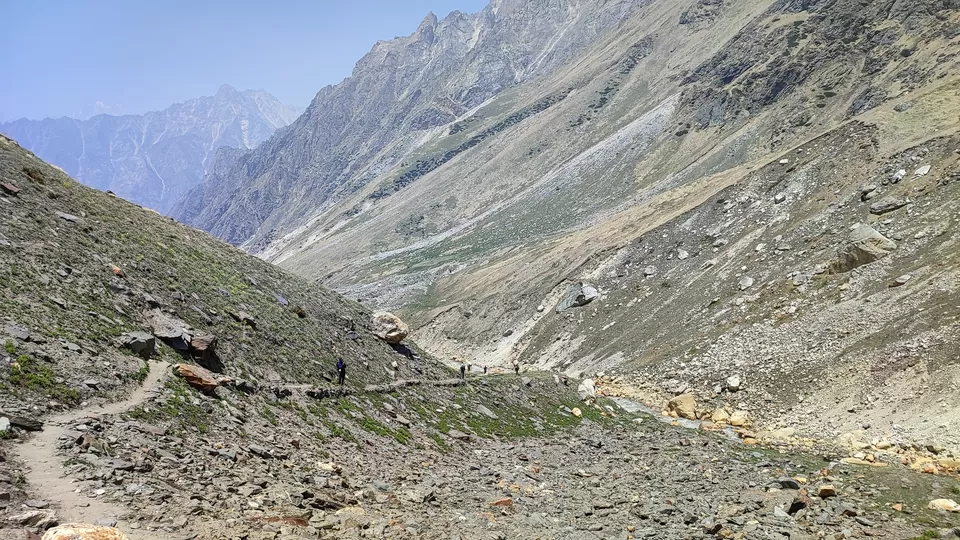
The trail to Kedar Kharak changes from lush greenery to a rocky and landslide-prone terrain. While the distance between both campsites isn't much, the fun lay in crossing the hilly terrain, taking care of the falling stones from high above. This was far more thrilling than the spider-wall chronicles.
When we arrived at the landslide-prone zone, Hardik and the local guide instructed us to wear helmets and always keep one eye focused on the top. The landscape for the next couple of kilometers had a flowing stream to our left and a rough and loose rocky patch slanting at an angle of 60 degree to our right. Loose gravel was sliding as we made our way heroically through the ridge. Some of us managed to shoot a quick video of our efforts. This phase of the trek was meant to be slow and steady with extra caution and attention being paid to safety. None of us minded the slowdown.
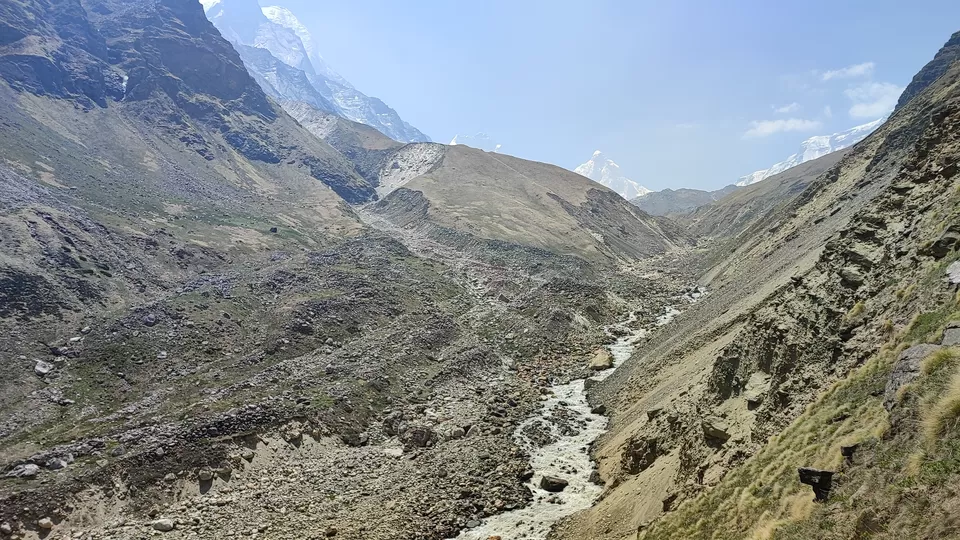
After crossing the ridge and getting closer to the stream, our objective was to steer clear of the water by carefully walking over the boulders on the edge of the mountain to cross over. This was the only way to move ahead. Thereafter, began a sequential and equidistant way of folks slowly climbing each boulder, ensuring that a strong foothold is being kept before the next step, and supporting each other by lending an extending arm.
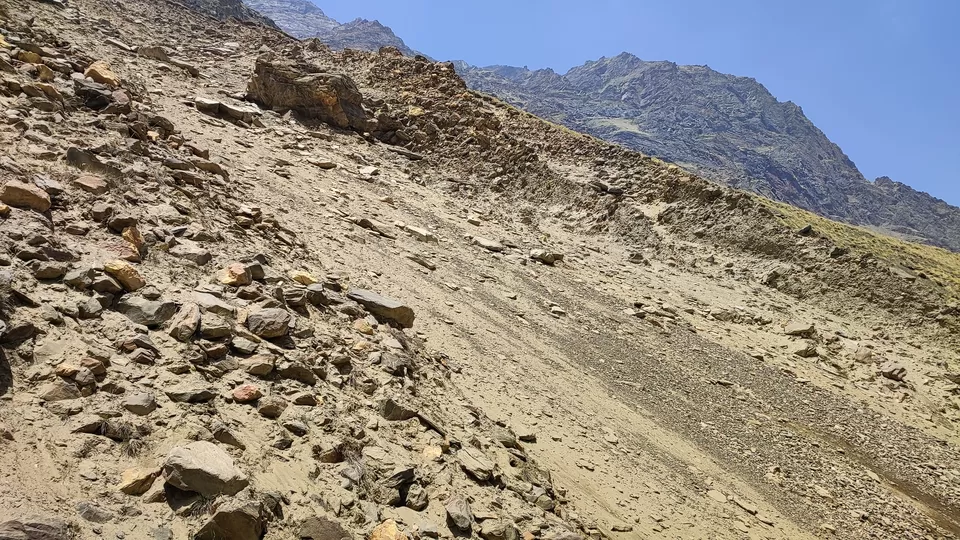
Once we had crossed over, we looked back at the now empty ridge and patted ourselves on the back for having successfully made it through this patch. The rest of our journey to the campsite was quite normal. No rocky terrains or steep climbs! We reached Kedar Kharak by 3 PM.

I was mesmerized by the clear views of Mt. Thalaysagar, Bhrigupanth, and Jogin 3. We were camping so close to them. The valley we left behind could be seen from an elevation. What made me even happier was the fact that we were the only ones camping that evening at Kedar Kharak. Although it is said that this part of the trail is frequented by a flock of blue mountain sheep, we weren't fortunate to witness that spectacle. The rest of the evening was spent in acclimatizing to even colder conditions.
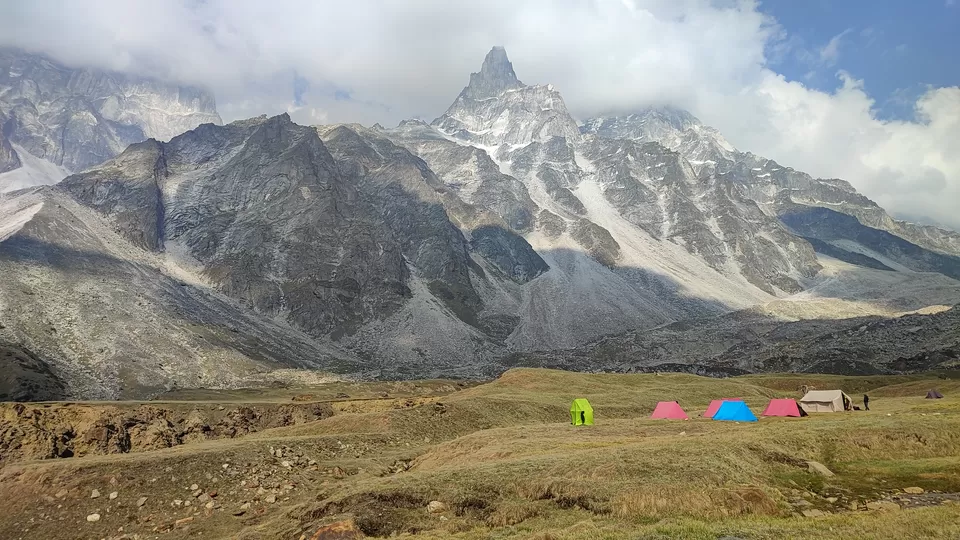
Chapter 5: A trail to remember - Kedar Kharak -> Kedartal -> Kedar Kharak
Summit Day brought along with it tons of excitement and a surge of adrenaline rush as I woke up to bright sunshine that made the peaks glow in the early hours of the morning. It felt like they were smiling graciously and inviting me to experience their hospitality and presence. I smiled at them while soaking the 360 degree view from our campsite. The prevailing silence with the cold wind brushing against my face felt refreshing and rejuvenating.
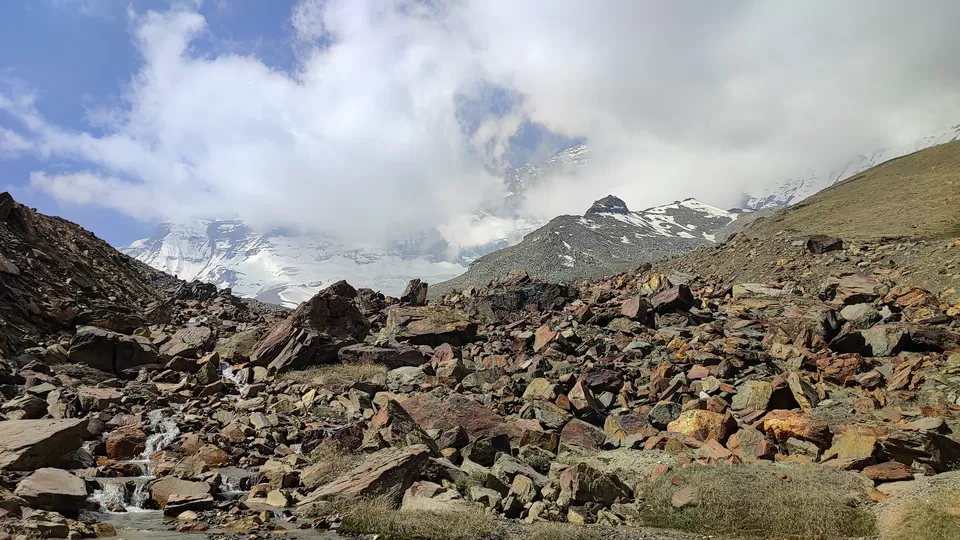
A long day awaited us with the hope that the weather does not drastically change through the course of our journey to the emerald lake. Since we were already over 14,000 ft, we knew that the trail leading up to Kedartal would have scanty vegetation and barren soil. What remained to be seen and experienced was the physical and mental intensity that our bodies and minds would be subjected to after commencing our trek.
We didn't waste much time, and after a quick breakfast, we started walking closer to the snow-capped peaks. The green meadows soon gave way to steeper trails, and as expected, lesser vegetation. The air was getting thinner and cooler, but with the shining sun over our heads, we knew we wouldn't be freezing at any point. Our bodies, by now, had warmed up, and we were taking regular brief stops to catch our breath.

One needs to cross three ridges to reach Kedartal. No wonder it is called the "hidden lake." As we climbed higher and higher at a steady pace, the valley started opening. The landscape was so different from previous days as all we could see were boulders, loose stones, quarry, and a combination of brownish and blackish soil. This rigged landscape had its own charm, and on looking back at Kedar Kharak from a point above, I could easily demarcate the stark difference in scenery. The gentle sound of the stream alongside was just the motivational kick that we needed to proceed. The much clearer views of Mt. Thalaysagar, Bhrigupanth, and Manda was indicative that the lake wasn't far away.
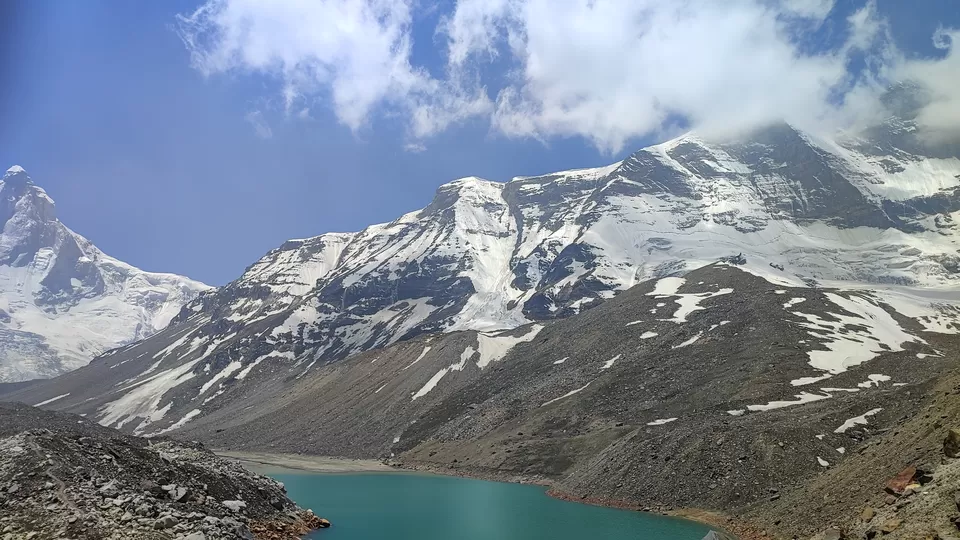
And then, with a span of a few minutes of arriving at the final ridge, the fatigue suddenly vanished as the clear water of Kedartal entered our line of sight. Words won't do justice to what I felt when my eyes fell upon the picturesque and enthralling beauty that lay a few hundred meters away.
An absolutely still lake displayed a light greenish color with an occasional bluish tinge at the periphery, which in turn was subtly changing to dark blue as the sun kept hiding behind the clouds. The reflection of Mt. Thalaysagar tand Mt. Manda in the lake was so prominent that I could spend hours sitting by this scenic delight. The essence of Nature's glory couldn't go unnoticed at this altitude and the feeling of accomplishment to witness such a spectacle made us proud. Even better was the fact that we were the only people around. An extremely private rendezvous with Nature, you might say!
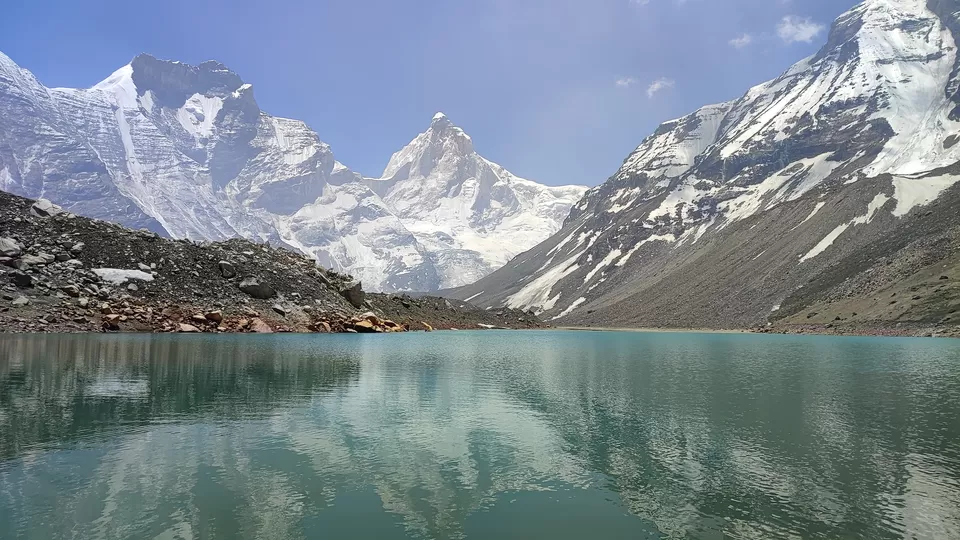
We were doing well on time and settled down by the lake to eat lunch and click photographs from all possible angles. The worldly problems took a backseat as we soaked in the fresh air and munched our food. It was obvious we didn't want to head back to our campsite, but it's a non-negotiable deal with Nature on every Summit Day - "you've seen what you had to, now head back and remember me in your gray cells."
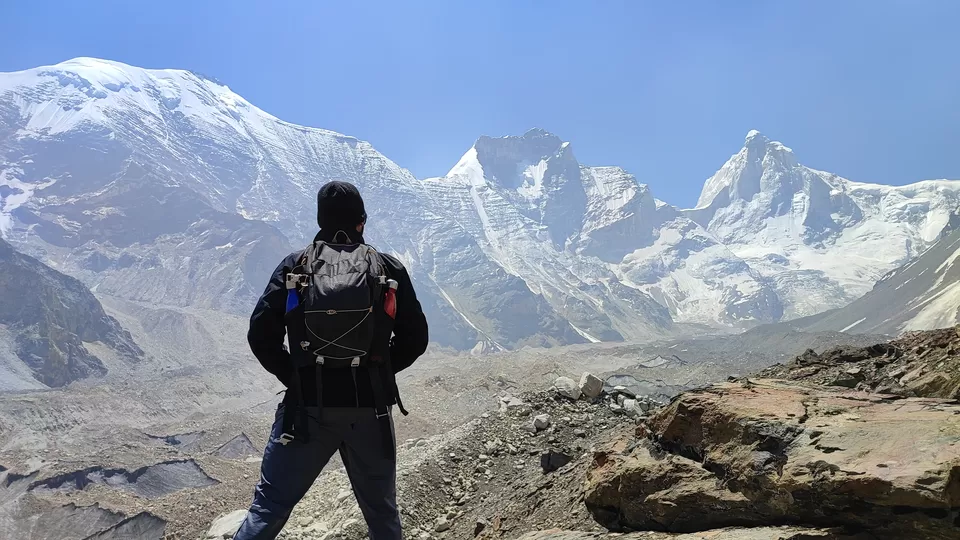
The way back to our campsite in Kedar Kharak wasn't challenging. A couple f hours later, we were sipping on hot tea and reliving the day and sights that we experienced. The temperatures plummeted soon after and we resigned to the common tent for the last supper.
Chapter 6: Back to base - Kedar Kharak -> Gangotri
The last morning of "camping with a view" arrived, and with it brought disappointment that this adventure had come to an end. However, the long descent to base (Gangotri) and the all-important hot-shower after 3 days were key elements to look forward to. The group woke up on time and started to prepare for the day. We bid adieu to the lush greenery at Kedar Kharak and started walking.
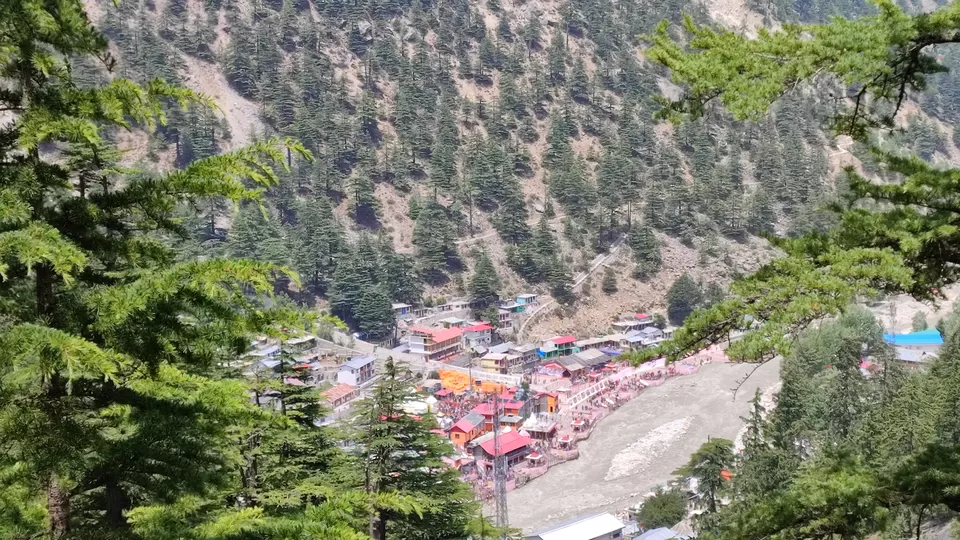
Given that we were descending via the same route, we were aware of the spots to look out for. While we maintained good pace for most of the trail, the portion that had loose stones and a rocky terrain slowed us down. The thrilling walk of around 300 meters across this ridge in loose soil and minimal footing will be etched in my memory for years to come. The weather was on our side for the entire duration of the descent; so, capturing the beauty of the valley and neighboring peaks for one final time was breathtaking.
After around 8 hours of walking, we arrived at our guest house in Gangotri, freshened up, and had an early dinner. A long drive back to Dehradun awaited us the following day. I spent considerable time reviewing the photographs from the previous days and reliving what I experienced through the course of this magical journey, which only made me stronger and more determined to gear up for my next trekking expedition.
The drive back to Dehradun was uneventful. The team was mentally preparing to face reality in their respective cities and lives. Our paths may cross at some point yet again, and hopefully, we will get to create more refreshing memories through these voyages.
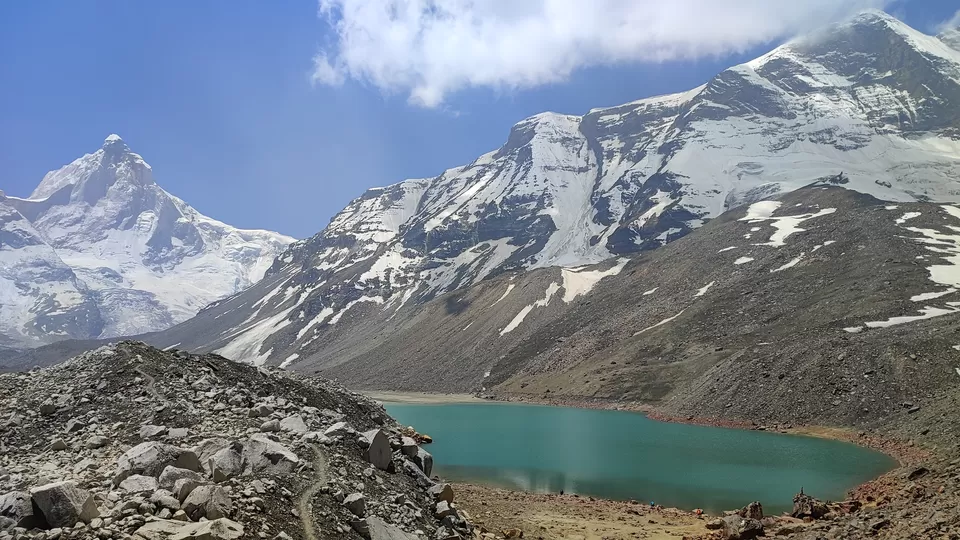
As I view the photographs, recall our conversations, and reminisce the accomplishments in the past few days, a genuine smile lights up my face. Another feat achieved and ticked off my bucket list, and it goes to show that I still have it in me to climb and traverse places where most people wouldn't be interested to venture into. Yes! It requires physical and mental strength and one needs to prepared to face adverse conditions should Mother Nature decide to unleash one of her mood swings during the journey. However, all said and done, the WOW factor and the scenic views throughout make you forget about routine shenanigans temporarily.
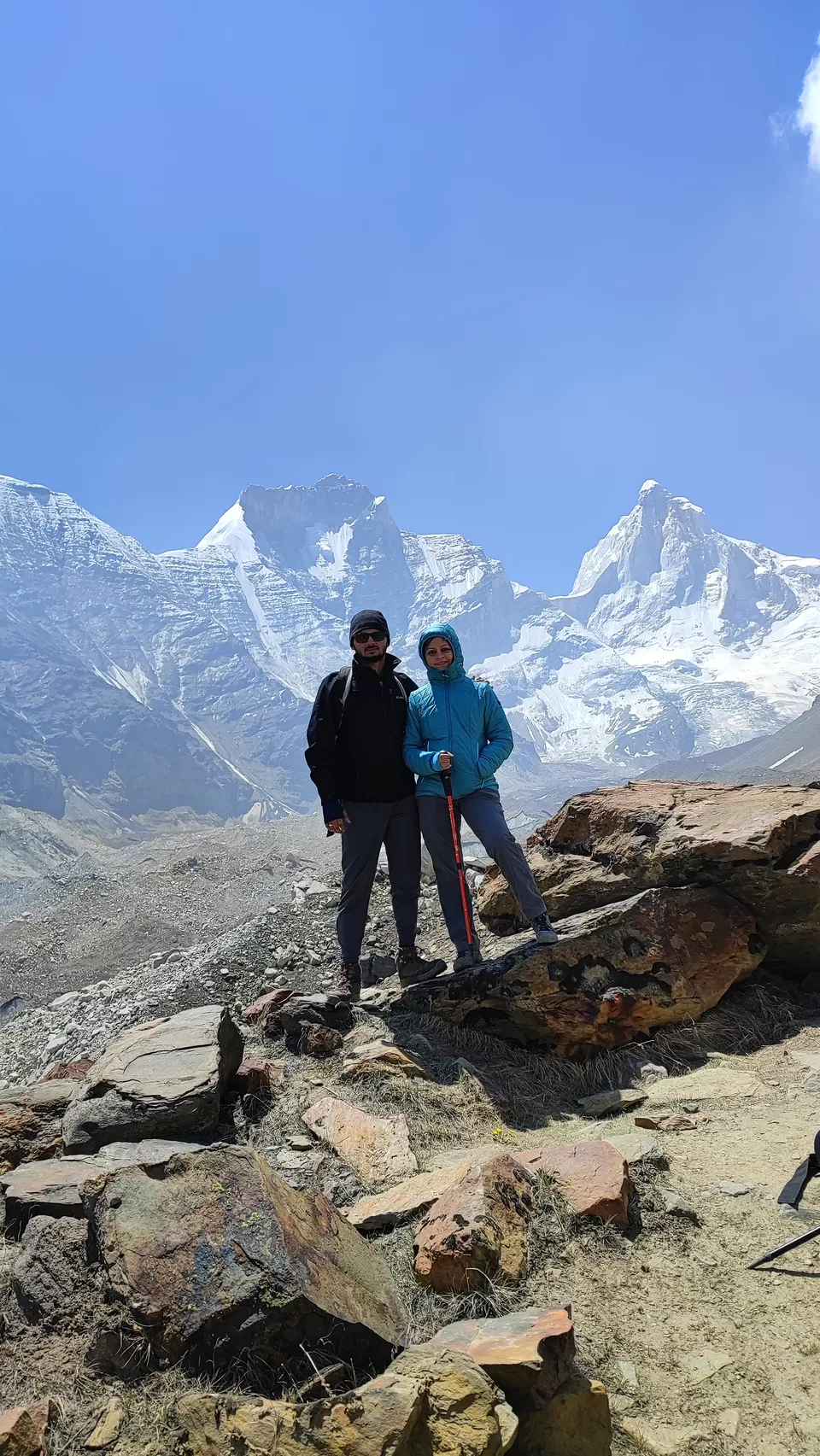
Here's to more adventures and climbing!

